





Rumble Strips
Rumble strips take a number of different forms, and can be produced by cutting grooves within the pavement surface, or by adding plastic bumps (or ribs) to the road.
Transverse rumble strips (also referred to as bar markings) are placed across the traffic lane to alert motorists to hazards ahead (such as bends, intersections or areas of pedestrian activity). They are most effective where drivers have been travelling at sustained high speed for long periods.
Longitudinal rumble strips (also referred to as raised profile edge lines or audio-tactile edge lines) can be used to delineate the edge of a road where driver fatigue is known to cause crashes. As well as providing visual delineation, longitudinal rumble strips can also be heard and felt by drivers and riders.
When a tyre runs over the rumble strips a noise and vibration is produced. This tells a sleepy or distracted driver that their vehicle is starting to leave the road.
Centreline rumble strips and flexi-posts. Longitudinal rumble strips can also be used in the centre of the road. When combined with painted centrelines, rumble strips help prevent head-on crashes and run-off-road crashes resulting from vehicles crossing into the opposing lane. Flexible posts (or flexi-posts) can also be used in the centre of the road to separate opposing flows and are an effective treatment in discouraging overtaking manoeuvres, reducing the likelihood of head-on crashes.
- Reduced run-off-road and head-on crashes.
- Reduced collision at diverge gores
- Improved visibility of edge lines or centre lines during wet weather.
- Potential for reduced maintenance of road shoulder.
- Advanced warning to hazards.
- Where used on high-speed roads, transverse bar markings have been shown to reduce speeds on approaches to intersections such as roundabouts.
- Longitudinal rumble strips are best deployed systematically on a route-wide basis or over a relatively long section of road. They may be appropriate to alert drivers over a shorter section of road where specific hazards prevail.
- Longitudinal rumble strips may be a hazard to cyclists and motorcyclists.
- Gaps in the rumble strips may be needed in some areas to allow water to drain from the road surface.
- Grooved rumble strips in the road pavement are susceptible to ice formation in cold areas.
- The noise made by rumble strips can be difficult for drivers of larger vehicles to hear.
- Consideration must be given to those living near to the road as rumble strips can generate noise.
- There must be at least 150 mm of sealed road outside longitudinal rumble strips or the road may be weakened.
The Star Rating Demonstrator is a freely available tool with the iRAP online software, ViDA. With the Star Rating Demonstrator, it is possible to explore the impact that this Safer Roads Treatment has on risk.
Treatment Summary
Costs | Low |
Treatment life | 1 year - 5 years |
Potential casualty reduction | 10-25% |
Case Studies
| Examples of related Case Studies |
|---|
| A-375 Road |
| Cross-sections and mid-block National Road M2-R7 Saratenii-Soroca-Drochia Junction |
| Mexico’s National Network |
Related Images
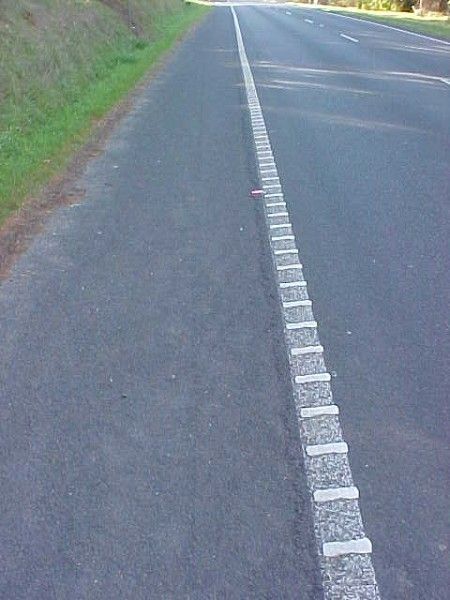 Audio Tactile Line Marking (ATLM), also known as rumble strips provided over edge line marking. Image credit: Unknown
Audio Tactile Line Marking (ATLM), also known as rumble strips provided over edge line marking. Image credit: Unknown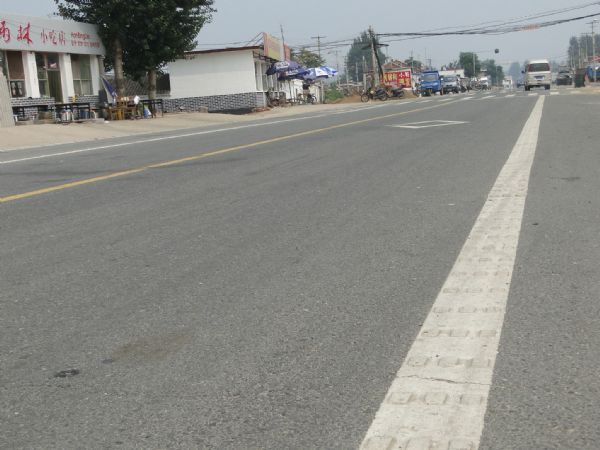 Shoulder rumble strip in China. Image credit: Greg Smith
Shoulder rumble strip in China. Image credit: Greg Smith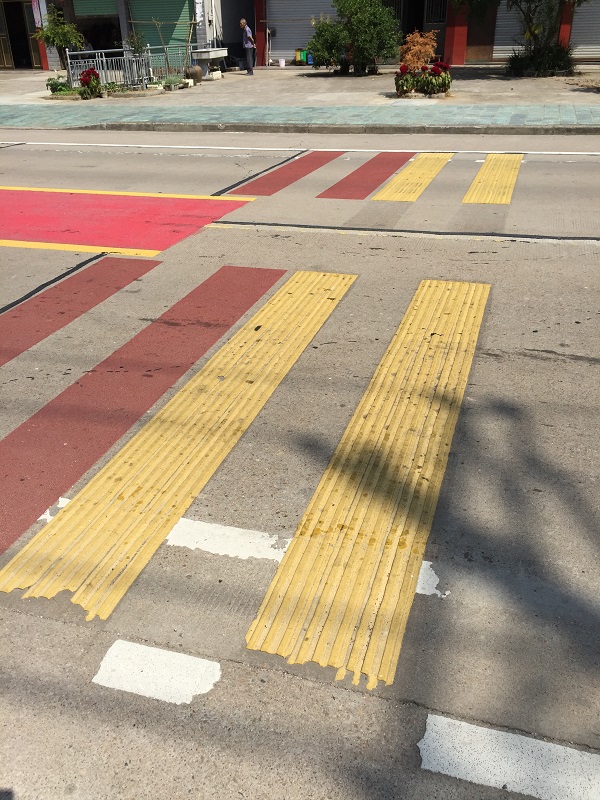 Lateral rumble strips in China. Image credit: Greg Smith
Lateral rumble strips in China. Image credit: Greg Smith Motorway with safety barriers, wide shoulder and rumble strip edge lines in Romania. Image credit: Alina Burlacu
Motorway with safety barriers, wide shoulder and rumble strip edge lines in Romania. Image credit: Alina Burlacu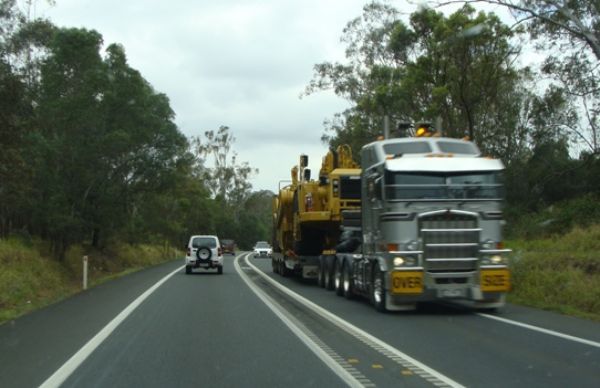 Showing wide centreline treatment incorporating median rumble strips, Old Bruce Highway, Australia. Image credit: Unknown
Showing wide centreline treatment incorporating median rumble strips, Old Bruce Highway, Australia. Image credit: Unknown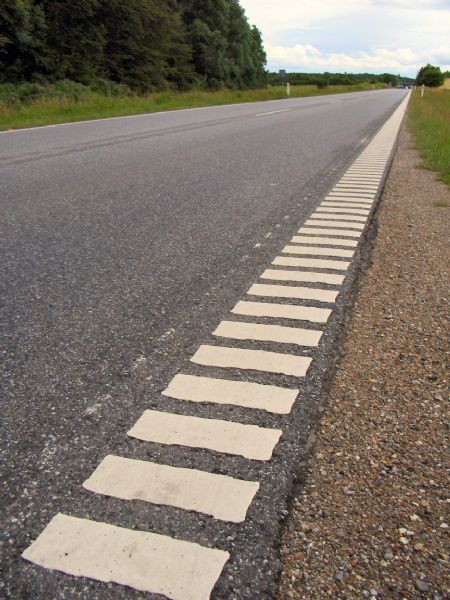 Painted rumble strip edge line on Primary Route 6, Denmark. Image credit: Unknown
Painted rumble strip edge line on Primary Route 6, Denmark. Image credit: Unknown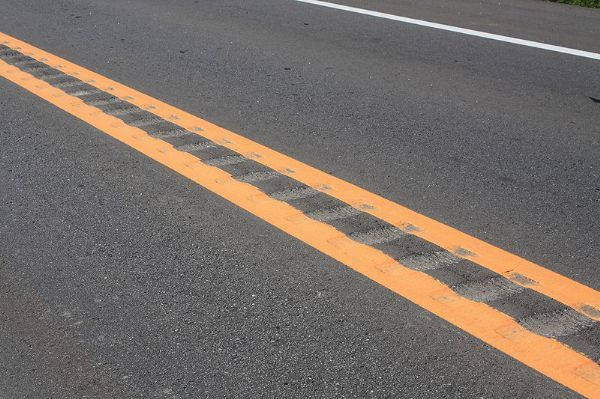 Rumble strip created by milling the existing road surface, National Route 230, Japan. Image credit: Mugu-shisai
Rumble strip created by milling the existing road surface, National Route 230, Japan. Image credit: Mugu-shisai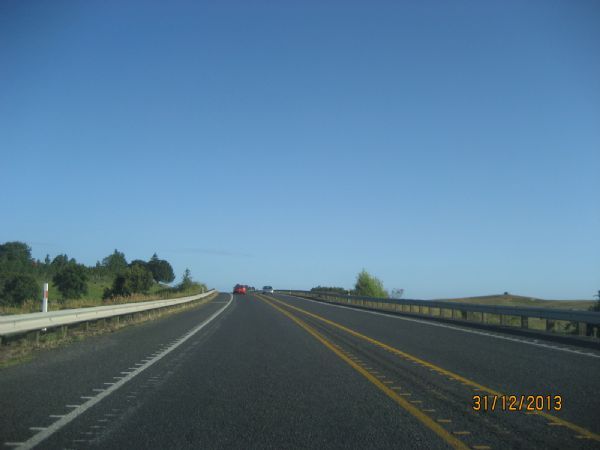 Wide centreline treatment. Waikato region, New Zealand. Image credit: Unknown
Wide centreline treatment. Waikato region, New Zealand. Image credit: Unknown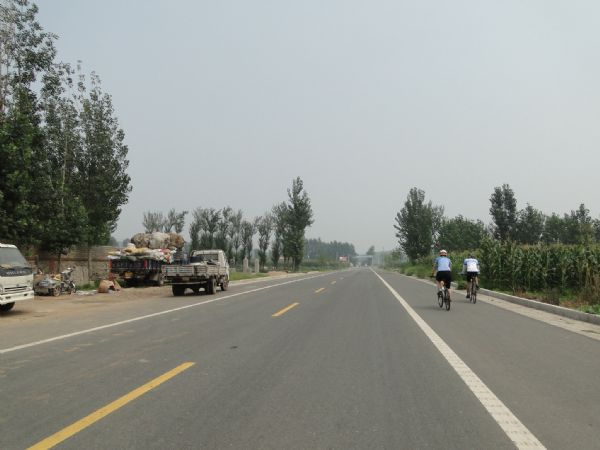 Wide sealed shoulder bicycle lane, China. Image credit: Greg Smith
Wide sealed shoulder bicycle lane, China. Image credit: Greg Smith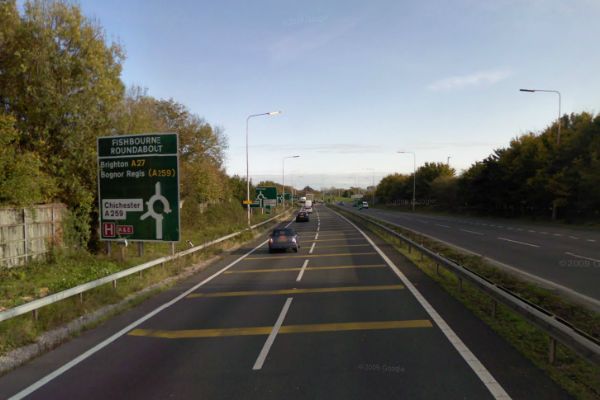 Yellow bar marking provided as speed calming measure on roundabout approach, A27 Chichester, UK. Image from Google street view
Yellow bar marking provided as speed calming measure on roundabout approach, A27 Chichester, UK. Image from Google street view










